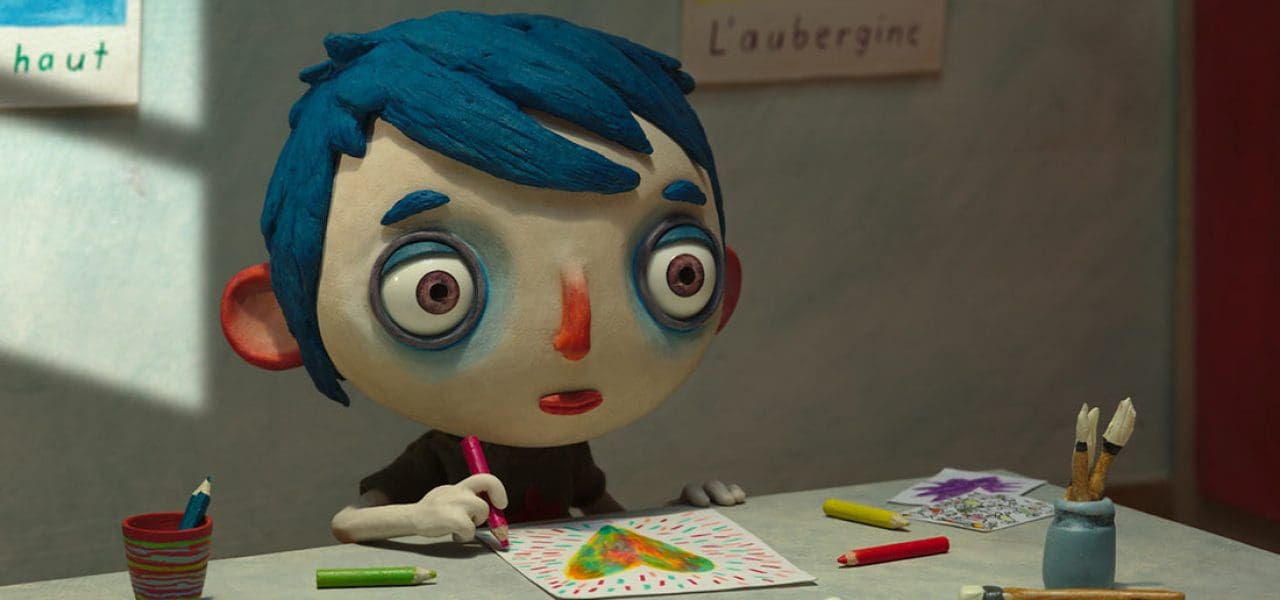
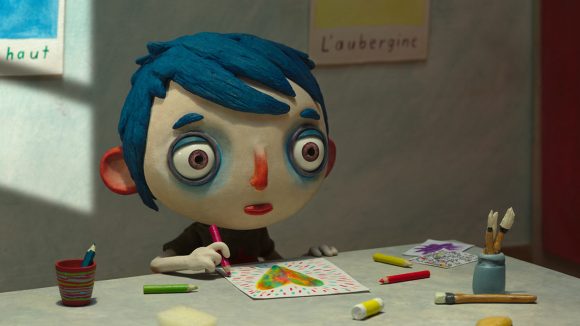
‘My Life As A Zucchini’ Director Claude Barras On The Hard Work of Simplicity and Minimalism
Stop-motion animated feature film My Life as a Zucchini has been the talk of the town since it premiered at Cannes last year. The minimalist yet realistic masterpiece, produced on a budget of just US$8 million, follows the experiences of a group of kids living in a foster home, and stands as a testament to the resilience of the human heart.
Winner of best animated feature at the European Film Awards as well as Annecy’s Feature Film Cristal and Audience Prize, Zucchini is currently nominated for the Academy Award as well three César Awards. The Swiss-French co-production will start its U.S. theatrical run through the GKIDS label on February 24.
Director Claude Barras discussed the production of the film via e-mail with Cartoon Brew. In our in-depth talk, he reveals the hard work of achieving simplicity, the keys to making children characters in films feel authentic, and why he believes stop motion is the midpoint between fiction and animation.
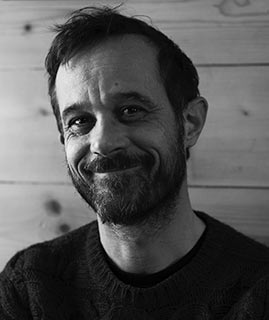
Cartoon Brew: You did a film pilot, Zucchini, in 2010. Can you tell us about that? Why did you make that first?
Claude Barras: It was Robert Boner, the producer, who was responsible for the development of the project, who challenged me to convince him that a film for children that speaks about abuse using puppets with overdeveloped heads was a risky but original choice. Taking my inspiration from Creature Comforts and from the casting of Jean-Pierre Léaud as seen in the supplement to the dvd of The 400 Blows, I imagined the casting of Zucchini and I dealt with all of the stumbling blocks to the project head-on and with humor so as to defuse them, even with the child who wants to change the name of the main character because he thinks Zucchini sounds too “girly” and is nasty. I wanted a very realistic quality in the voice to contrast with the very simple visual. The big heads are obviously a way to facilitate the animation and to target the characters’ emotions in the master shot. The bright colors are meant to give a bit of joy and hope to the children in this story which begins very badly. Robert Boner was convinced but he retired in 2010 and passed the torch to Rita Production, which, using this pilot film, quickly found the financing for a Swiss-French coproduction. We were able to start work in 2012.
The film’s design possesses a beautiful sense of simplicity and minimalism. What are the reasons behind this minimalism, and how did you achieve it?
Claude Barras: Feel rich with the budget you have, that was the final lesson Robert Boner gave us as he retired. Regarding the minimalist aspect, simplifying is not weakening, but going to what is essential. I like this path which guided me from the writing of the script to the mixing of the film. I decided to convey the realism of the script through the voices and the light, not through the design. It has been shown in a number of studies that the more realistic a face, the more details and realism are needed in the animation in order for the viewer to believe it. So I chose to simplify to the maximum in order to convey the emotions very simply. My faces are like emoticons, they have such a simple aspect that the emotions rise to the surface simply by imperceptibly moving an eyelid. It’s a very exciting and creative interplay for the animators.
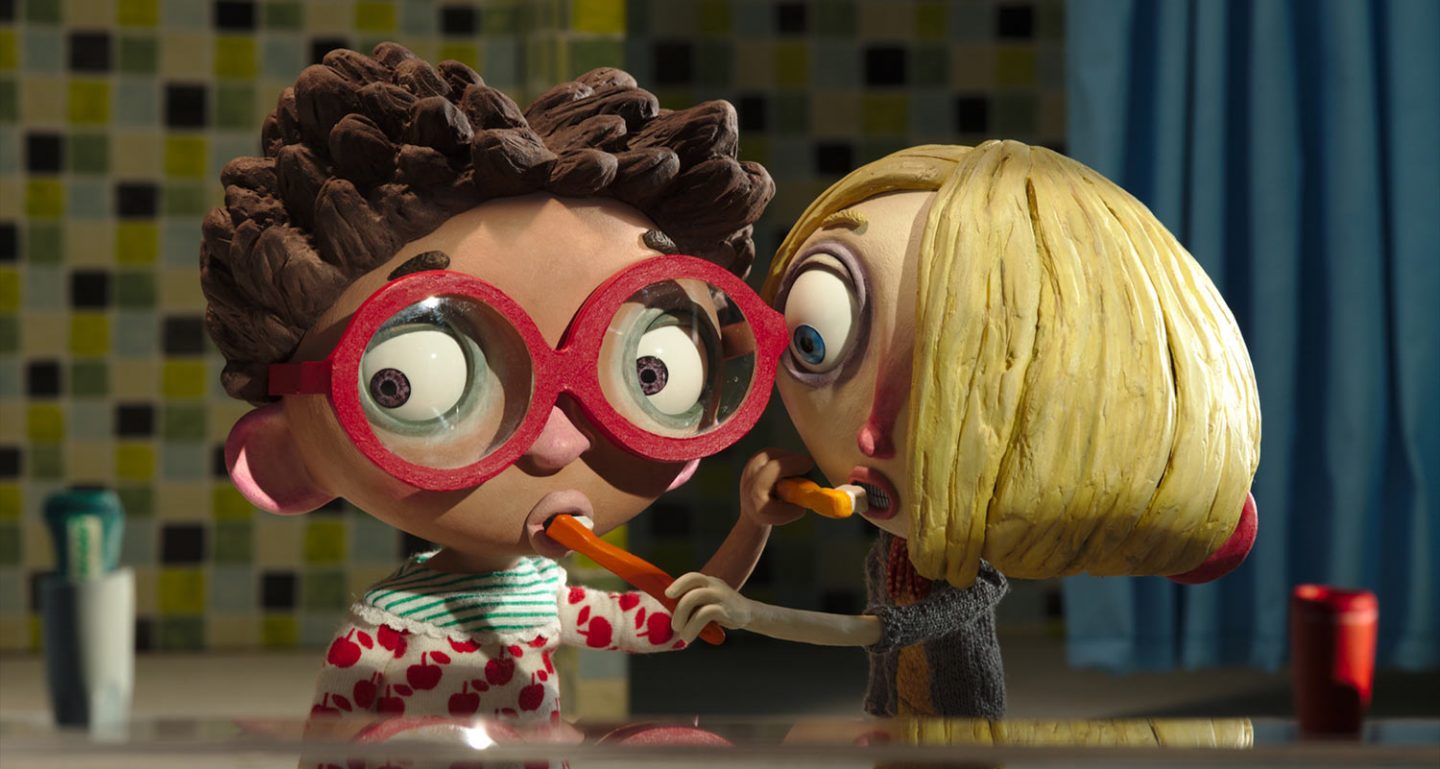
I heard you did quite some research for the long arms, to see which positions were possible for the characters to do without them looking like an ape?
Claude Barras: I used the idea of overdeveloped heads with big eyes to focus on the emotions of the characters even in wide shot. The length of the arms was determined for the characters to be able to put their hands in front of their eyes so as not to force the animation too much. In order to reduce the Orangutan effect, we made arms with an aluminum wire armature, no elbow, so that they could be bent throughout the film to prevent having the hands too close to the ground in neutral position. But this anamorphosis resulted in surprises that also created a number of problems for the set designers and prop people. For example, when it involved designing a door or a window and deciding where to put the handles. Even when Simon takes his hat and throws it on the table, we had to make two sizes of hat that were changed during the animation so that the hat on the table was not disproportionate in size to the plates and other utensils.
What were other ways to express emotions besides the performance of the characters?
Claude Barras: I tried, in moments of emotion, to frame the reactions of the characters with rather long shots where the main action takes place off-screen, in the soundtrack. I gave Kim [Keukeleire], the head animator, indications on the emotional path of the characters, and she gave me suggestions on how to transcribe them in animation, which we tested in mime with the animators.
Unlike the recording of the voices, the shooting was not done in the order of the shots, but by set, by axis and by light. Consequently, my work was to communicate to the team the main idea of the shot, its emotion, and how it fit into the sequence, and also the emotion and the main idea of the sequence in the film. This was done so that the emotions could be translated into gestures that are correctly proportioned throughout the film. Kim did enormous preparatory work with the animators around the eyes and the hands. The animation is simplified to the maximum, but its appropriateness makes it possible to forget the simplification and leaves room for the viewers to identify with it in calmer moments. Once again, it is a form of minimalism that guided us.
There’s a fine combination of humor and sadness in the film. Fun and sad moments enhance one another. How did you balance those emotions out?
Claude Barras: Yes, that is what I liked in the book, which is written in the first person, a rather amazing monologue that speaks of sad things. But it was difficult to translate this story cinematographically. Morgan Navorro, a friend who writes novels for young people and who has a very good feeling for dialogue helped me for a time, but it is Céline Sciamma who finally found a way to mix humor and sadness with lots of tenderness and empathy. The key, she said, is to manage to think like a child and not to wonder how children talk. This jumble of childhood emotions is the script’s great success. We laugh in the sad scenes and we cry in the happy ones. When Céline had me read it, I realized I had quite a script in my hands and at that moment I felt great excitement mixed with great responsibility.
The voice acting in this film is very unique, especially the use of non-professional children. Tell me more about the recording process.
Claude Barras: We recorded for six weeks in our studio where we make short films, Hélium Films in Lausanne, with children who were non-professionals. Our sound engineer, Denis Séchaud, had first sound-proofed the locations with foam panels and sheets in order to create interior or exterior dissonorities based on the sequences. We positioned two cameras in the two axes and filmed the children playing all of the scenes. Lynn Devillaz, our prop person, made foam props and installed a table or a swing, for example, based on the needs of each shot. This was more interesting than recording them standing in front of a microphone because, when you talk while standing up is not at all the same as when we think we are standing up while talking. In the interaction, we obtained an energy in the voices that is very specific, and the animators were delighted with it.
For the choice of children, Marie-Eve Hildbrand (who supervised all stages of the voice work, from casting to editing, including directing the actors) convinced me that I did not have to allow myself to be guided solely by their individual tonalities, but also by the cohesion of the group we were going to create. The children were chosen based on their differences in age and personality. They did not have to play a role, but rather remain themselves while putting themselves into the situations of the film. This method also helped me a lot in the production before storyboard. For example, when six children are around a table and are playing, we quickly knew whether or not they were positioned correctly, whether it was realistic. We were able to quickly visualize what we were going to film on the animation set later on. This method costs more at the start, but enabled us to save a lot of shooting time. The truthfulness of the story and the emotional authenticity of the characters owe a great deal to this.
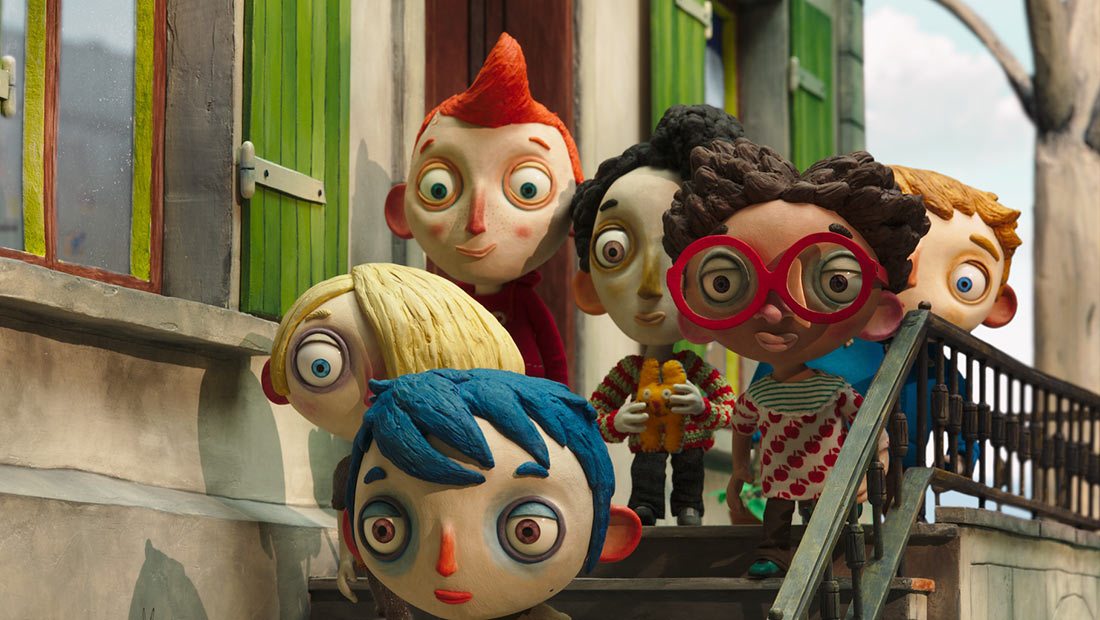
My Life as a Zucchini almost feels like a short film, in terms of artistry and a modest kind of simplicity. Are there specific short animated films from the festival circuit that inspired you in certain choices for Zucchini?
Claude Barras: I grew up with a French stop-motion TV series by Serge Danot entitled Le manège enchanté [The Magic Roundabout]. I also soon discovered Jiří Trnka’s The Hand, in a program of short films shown on Sunday afternoon television. This made a real impression on me and I realize now that the idea of simplicity in the design of the puppets and in the sound track comes from these initial film experiences.
My taste for melodrama comes from another series that I admired: Heidi by Isao Takahata and Hayao Miyazaki. Then, when I was studying illustration, I also admired La course à l’abîme by Georges Schwizgebel, Tango by Zbigniew Rybczynski, Food by Jan Svankmajer and Milch by Igor Kovalyov. I am also a great admirer of the films of the French team of Catherine Buffdat and Jean-Luc Gréco, particularly The Lost Bag, and also of Madame Tutli-Putli by Maciek Szczerbowski and Chris Lavis, Luis Cook’s The Pearce Sisters and L‘air de Rien by Cécile Milazzo.
For the gap between the realism of a melodramatic story and a simple and unconventional graphic style, I could also cite the pioneering work of David O’Reilly and his Please Say Something, of Frank Ternier with Le Diable en bouche or even the immense Creatures Comforts of Nick Park. And I would end with some classic animated feature films: The King and the Bird by Paul Grimault, Grave of the Fireflies by Isao Takahata, The Nightmare Before Christmas by Henry Selick and Tim Burton, Princess Mononoke by Hayao Miyazaki, Wes Anderson’s Fantastic Mr. Fox, Chicken Run by Peter Lord and The Wolf Children by Mamoru Hosoda.
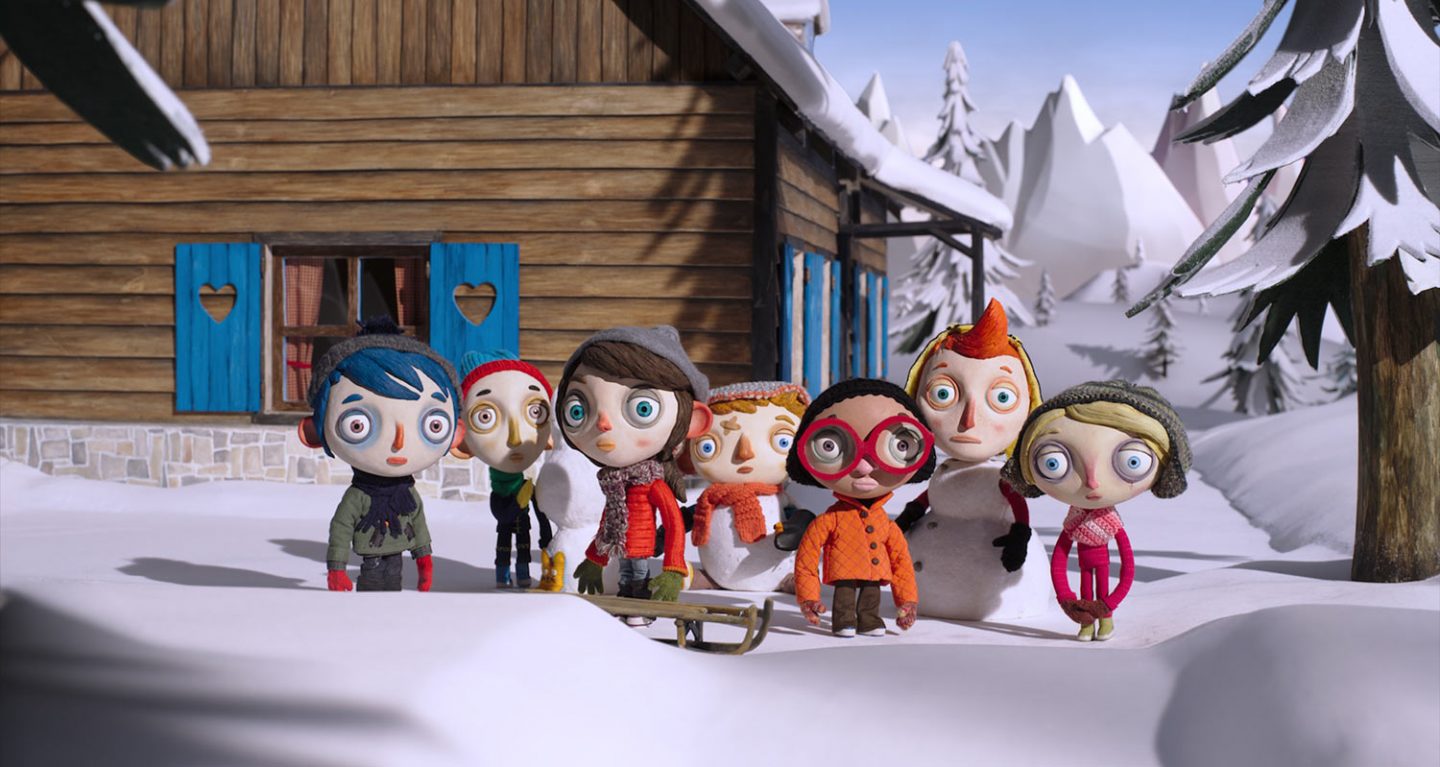
What do you think is the charm of stop-motion animation?
Claude Barras: For me, stop motion is really the midpoint between fiction and animation and these sources of inspiration from real cinema are as important to me as those I have previously cited and they illustrate better than words my pronounced taste for marginal characters and melodramas. Freaks by Tod Browning, The 400 Blows by François Truffaut, The Elephant Man by David Lynch, Wings of Desire by Wim Wenders, Dead Man by Jim Jarmusch, Dogville by Lars von Trier, Spider by David Cronenberg, Amores Perros by Alejandro G. Iñárritu, Time of the Wolf by Michael Haneke, The Host by Bong Joon-ho, Old Boy by Park Chan-wook, Children of Men by Alfonso Cuarón, Tomboy by Céline Sciamma, Two Days, One Night by the Dardennes brothers and the very recent and magnificent I, Daniel Blake by Ken Loach.
Stop motion is a concentration of the difficulties of fiction and of animation. Unlike digital animation, which makes it possible to improve each shot with multiple takes, in stop motion each shot is filmed only once, without the possibility of correction. Whether one or ten characters are on the screen changes nothing, the rule is that a single animator per set builds the shot image by image. So, the charm of this technique lies in the enjoyment experienced in collectively resolving this double difficulty which we create for ourselves from the outset, from the relationship between what is poetic and dangerous in real films and the materiality of the puppets. We find a creative magic and freedom which suddenly appears in the single take of each shot. This freedom is the result of the empathic intimacy between the animator and the puppet, I’m convinced of it, and it is my role as the director that make the appearance of this creative magic possible with a good script, but also with puppets that the animators can play with easily in the time they are given for each shot.

.png)